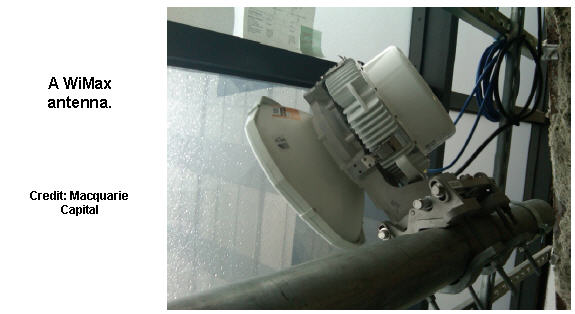Clearwire aims for 'real world' downloads of 20 to 70 Mbps

Clearwire dropped a small bombshell when it said Wednesday that it would launch Long Term Evolution 4G trials and combine them with the WiMax technology the company now deploys The game plan for Clearwire is to future proof its network, garner more wholesale customers and leverage its wireless spectrum to leapfrog rivals.
On an earnings conference call, Clearwire CEO William Morrow outlined how the company could outrun rivals. Morrow said:
We plan to conduct 4G LTE technology trials expected to yield unmatched and unplanned speeds here in the US. And to test multiple coexistence in areas between LTE and WiMAX radio technology. We expect the tests to show that our all-IP network and unique depth of spectrum will enable us to deliver mobile broadband services at faster speeds and with more capacity than any other incumbent wireless carrier regardless of the radio technology the plant to use.
In fact we believe we can show real world download speeds of 20 to 70 megabits per second, versus the 5 to 12 anticipated by other local carriers. It's exciting from a technical and asset perspective because we are the only service provider in the nation with the spectrum necessary to be able to conduct tests of this nature and on this scale. And we can do it while reusing our existing core infrastructure and backhaul and using commercially available LTE equipment. We plan to conduct tests in collaboration with Huawei, who is the same infrastructure provider which employed the world's first commercial LTE network in Europe. This commercially deployed equipment is operating at the same frequency as our spectrum band, so the equipment is off the shelf with no customization.
Speeds of 20 to 70 megabits per second in real world conditions would be impressive to say the least. Those speeds are also enough to craft wholesale agreements with the likes of T-Mobile, which needs to upgrade its network.

It's unclear how Clearwire's LTE trials will turn out, but Morrow has one interesting experiment underway. Among the potential benefits from Clearwire's LTE trials:
- Clearwire future proofs its network;
- Highlights the importance of 2.5-2.6 GHz wireless spectrum as an asset;
- Will become a more valuable partner to carriers;
- And a potential takeover target in the future.
Maquarie analyst Phil Cusick notes:
The LTE network operating would operate at nearly twice the national spectral capacity of its closest competitor and could deliver speed up to 50-70 Mbps. The configuration and 2.5GHz band would allow Clearwire to piggyback on European operators’ LTE devices and potentially grow in a bigger ecosystem than either AT&T or Verizon. It could also increase Clearwire's attractiveness to T-Mobile U.S. as a wholesale or strategic partner.
In the T-Mobile scenario, it's not a leap to picture a merger with Sprint, which owns 52 percent of Clearwire. A T-Mobile-Sprint merger has been off the table because the two companies operate two different networks (GSM, or Global System for Mobile Communications vs. CDMA, or Code Division Multiple Access), but Clearwire could be the bridge that smooths out that integration.
Now there are still plenty of worries about Clearwire. The company has debt issues and most of its growth wholesale subscribers---mostly via Sprint---that don't garner much revenue yet since 52 percent of Clearwire subs are in markets without 4G coverage yet.
But Clearwire is making real business progress, rolling out markets and forging distribution pacts with Best Buy. Relative to a year ago, Clearwire is in much better shape.
- T-Mobile feels the heat vs rivals, loses subscribers in second quarter
- Clearwire announces LTE trials, earnings and partners; remains committed to WiMax, too
- Clearwire targets Apple crowd with iSpot
- All 4G coverage
- Best Buy, Clearwire team up on 4G
- Clearwire launches new 4G modems, supports Apple laptops
- Altair Semi co-founder: WiMax ‘just isn’t happening’
- Sprint, Clearwire rev 4G: What’s the shelf life for WiMax?
- CTIA: Sprint, Clearwire CEOs talk about the rise of 4G